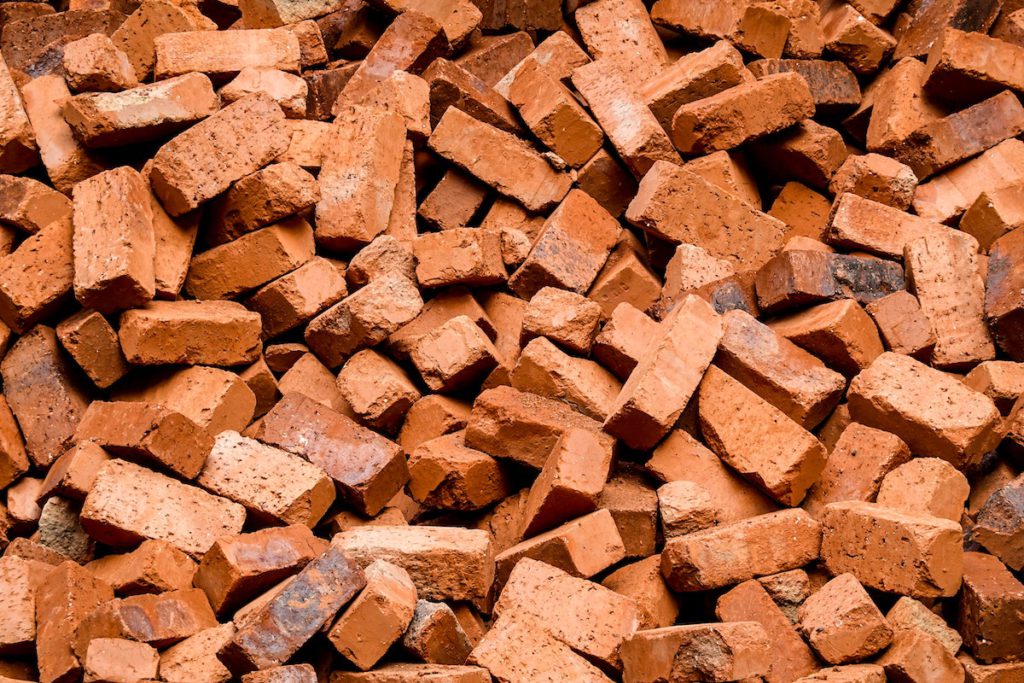
This article discusses the different methods used to make clay bricks and explains the advantages and disadvantages of each. – The traditional method of making bricks is the soft mud moulded method, which involves mixing much thicker clay mix with sand and water and pouring it into a mould to form the bricks. Once set, the bricks are removed from the mould and left to dry before being fired in a kiln. This method produces bricks with a rough texture and can be used to start brick walls. The dry press form is another popular method of brickmaking.
The process involves pressing clay into well-shaped bricks, which are then dried and fired. Mudbricks are made from wet clay-containing soil and require the addition of sand, grog, or other materials for strength. Straw or similar binders may also be used. The burning process is required to make durable and strong bricks that can withstand harsh weather conditions. In addition to clay, brick nepheline syenite is also used in some cases.
Clay bricks are made through a preparation process that involves brick manufacturing. The brick manufacturing process uses materials such as sand, clay, and other minerals, which are then mixed in with water. This mixture is then poured into a brick kiln and heated to very high temperatures. The heat turns the raw material into a solid mass which is then shaped and cut into individual bricks. In modern brick factories, many different materials are used in the brick manufacturing process. Clay is one of the most common materials used and can be moulded by hand or by machine.
It is prized for its durability, insulating properties, and attractiveness as a building material. Clay brick refers to a unit composed of clay and mortar, which is then cured and fired. This process involves mixing sand, water and clay to form construction blocks, which are then dried or fired in an oven at high temperatures. The resulting product is a durable brick that can be used in many different applications such as walls, pathways, foundations, and landscaping elements. Mortar is used to bind the clay bricks together and can be made from cement or sand mixed with water. In addition to its durability and attractive aesthetic appeal, clay brick also has excellent insulating properties making it an ideal material for both residential and commercial buildings.

Clay brick is made by taking clay-bearing earth and forming it into balls or lumps. The earliest bricks were simply dried in the sun, but modern bricks are formed in brick moulds, which are wooden moulds filled with dusted clay balls and then sanded into rectangular forms. The formed bricks are then laid raw on covered racks or shelves so they can dry in the sun. Once dry, they are fired in a kiln at temperatures of 900 to 1200 degrees Celsius. This process gives them their unique colours and durability.
Clay bricks have been relied on by early builders and brick suppliers for constructing permanent structures due to the abundant natural materials available. Lacking the stone that was available to their contemporaries in other regions, clay bricks were often made from disfigured raw bricks, laying them out and then baking them in the sun. If a brick was formed incorrectly or broken during the process, it would be considered useless and discarded.
Clay bricks are made in two different ways, sun-dried and burned-dried. Sun-dried bricks are formed by compressing clay or mud into a mould and allowing it to dry in the sun. Fired clay bricks are created by using a kiln to burn raw materials such as shale, clay, and sand at temperatures between 1,000 and 1,200 degrees Celsius. This firing process helps to increase the durability of the brick as well as its hardness and strength. The chemical and mineral content of the raw materials used also influences the colour of the fired brick. The last step is cooling down the fired bricks to a certain degree temperature so that they don’t crack due to rapid cooling.
Clay bricks are made of natural clay minerals, which are then blended with pigment and other additives to improve the bricks’ chemical resistance. The manufacture of speckled bricks requires blending small amounts of manganese dioxide, barium carbonate and other elements to produce different shades with an excellent surface finish. It is also possible to change the background colour by using barium carbonate in varying amounts and viewed depth. This will ensure a superior surface finish and produce a range of colours from buff yellow to deep red.
To make strong mud bricks, the first part is to lower the soil’s clay content by adding sand. Then the soil needs to be mixed with water to form moldable mud. Adding manganese oxide helps retain the water resilience properties of the retained soil, allowing it to hold its shape when dried in the sun. The bricks are then fired in kilns, where they gain strength and durability while retaining their shape and colouring. The manner of making bricks has been around since ancient times and its goal is still the same: produce a durable material from a source of local soil with particular properties.
Clay bricks are made from mud, either in wet or dry form. Wet mud bricks are made by mixing clay and water and then forming into the required shape. These wet bricks are then dried by the sun for several days before they can be used in construction. Dry mud bricks consist of powdered clay, sand and water which are mixed to get a workable consistency. After the mix is shaped into a brick form, it is placed in the sun to dry out until it has obtained the required stiffness. To make more uniformly shaped bricks, a mould is often used to ensure each brick has a consistent size and shape.






